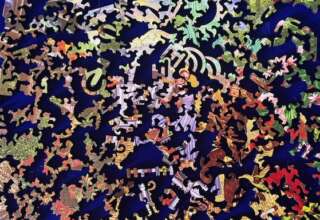
The Sacred and Spiritual are also found in the contemporary sanctuaries we create (whether workshops, carnivals, or retreat sites). These are special sites where learning and re-creation can occur (Bergquist, 2017). In many societies (such as Hawaii) one can retreat temporarily to a sanctuary—so that forgiveness can be found (before returning to society). This forgiveness might be granted by other people (a profound source of inclusion) or by oneself (a way to discover or renew privilege). The Spiritual and Sacred are also to be found in ceremonies we perform (whether a wedding, funeral or birthday party) and processions we enact (whether a church service, parade or New Orleans Second Line). The animism of our ancient ancestors is still alive—it just takes somewhat different form.
Community of Meaning and Memory
A sacred vision of Coherence can be founded on the belief that everything in the life of a community has meaning and purpose—and therefore should be appreciated, celebrated and remembered. A community of memory can be founded on this sense of meaning and purpose. This community of memory becomes the primary forum for collective appreciation and celebration. Bellah and his colleagues (1985, p. 282) put it this way:
“The communities of memory of which we have spoken are concerned in a variety of ways to give a qualitative meaning to the living of life, to time and space, to persons and groups. Religious communities, for example, do not experience time in the way the mass media present it-as a continuous flow of qualitatively meaningless sensations. The day. the week, the season, the year are punctuated by an alternation of the sacred and the profane. Prayer breaks into our daily life at the beginning of a meal, at the end of the day, at common worship, reminding us that our utilitarian pursuits arc not the whole of life. that a fulfilled life is one in which God and neighbor are remembered first.”
At this point, Bellah brings the secular and the sacred together:
“Many of our religious traditions recognize the significance of silence as a way of breaking the incessant flow of sensations and opening our hearts to the wholeness of being. And . . . tradition, too, has ways of giving form to time, reminding us on particular dates of the great events of our past, or of the heroes who helped to teach us what we are as a free people. Even our private family life takes on a shared rhythm with a Thanksgiving dinner or a Fourth of July picnic.”
As Bellah notes, the assignment of meaning concerns the relationship between a community and its deeply felt commitment to interpersonal relationship and group relationships. Ultimately, sacred coherence is based on the overarching relationship between community and some divine (sacred) entity.
The I-Thou of Coherence
We find the overarching relationship and the spiritual tradition inherent in the vision of I-Thou identified by the Jewish Theologian, Martin Buber (1958). For Buber, the coherence of community begins with the coherence of interpersonal relationships. As is the case with the closely related concept of Agape (a form of love to be found in the Greek lexicon), Buber’s I/Thou relationship is formed on behalf of some greater devotion or cause. There is a third element involved in a sacred relationship between two or more people, or a gathering of people in a community. This third element can be the honoring of God or achieving the Greater Good. The binding, relational “glue” (agape) is to be found in that which transcends those individuals who are engaged in the relationship. In many cultures, there is a dedication of all members of this society to a specific set of values and ways of finding meaning in their world. This dedication blends the secular and the sacred.








